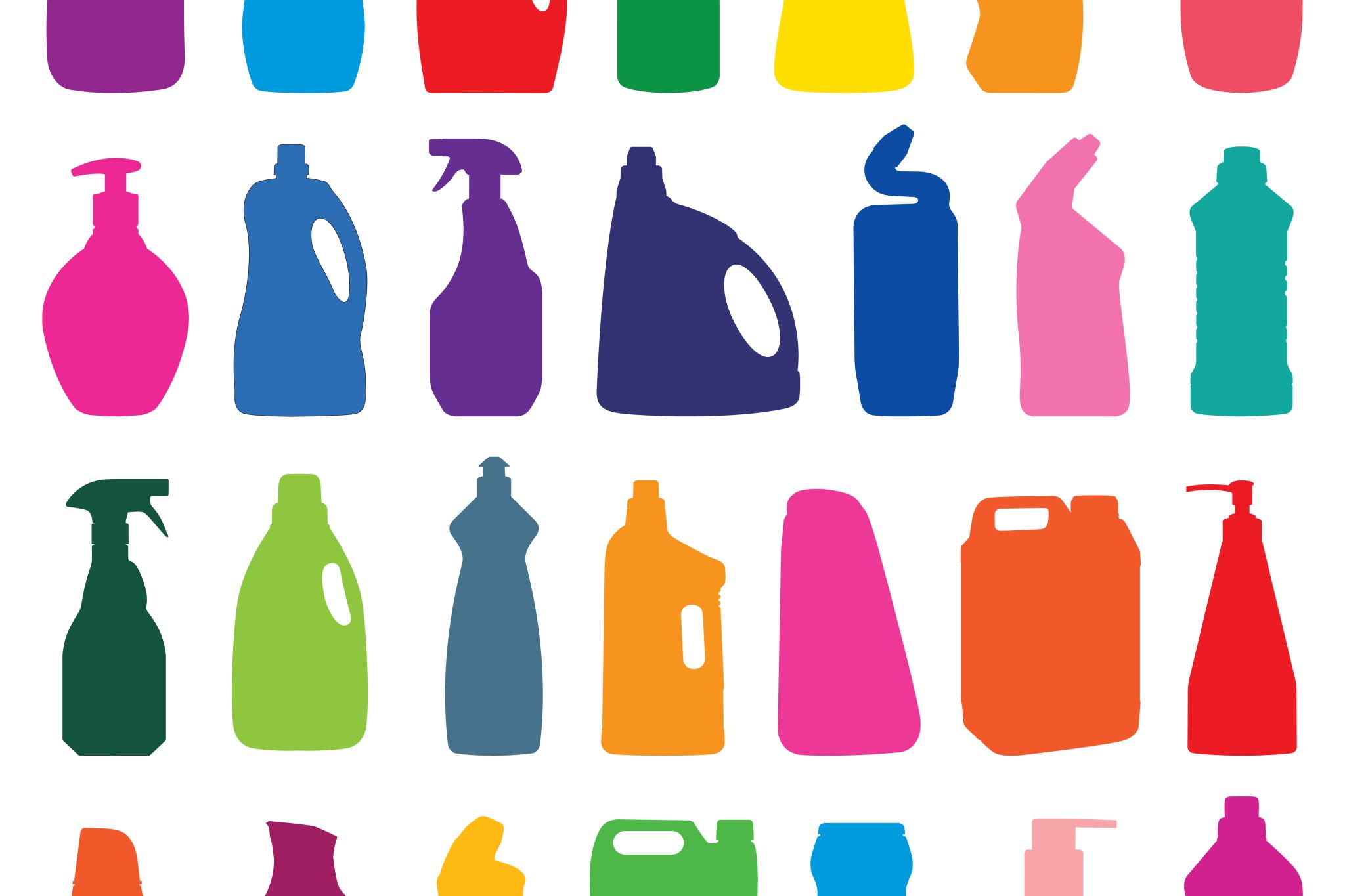There’s everyday clean, guest clean, and then there’s COVID-19 clean.
Even though the Centers for Disease Control and Prevention has recognized that the virus is spreading by airborne transmission and personal contact, it still recommends cleaning and disinfecting surfaces.
To get down the absolute nitty gritty on how to disinfect your home, you’ll want your big guns: bleach, rubbing alcohol, and hot water.
The Best Disinfectants
For your high-touch surfaces, the CDC recommends a bleach solution diluted with water, or a 70% alcohol solution.
Follow this bleach recipe: 5 tablespoons (1/3 cup) bleach per gallon of water, or 4 teaspoons of bleach per quart of water.
Make sure to properly ventilate when disinfecting with bleach.
And check to see if your bleach has expired. Who knew it could? After about 9 months to a year, and if it smells less bleachy, it’s lost its disinfecting power. Time for a new jug.
Tip: Don’t mix bleach with anything other than water; otherwise, it could set off a dangerous chemical reaction. For instance, bleach + alcohol is a deadly combo.
How to disinfect your home if you don't have bleach? Regular old rubbing alcohol (isopropyl alcohol or ethyl alcohol) works, so long as it’s at least 70% alcohol, according to the CDC. The alcohol concentration will be listed on the bottle. Rubbing alcohol you buy should already be diluted, unlike bleach.
Is There a Such a Thing as Too Much Disinfectant?
EPA studies have found that using some disinfectant products can cause germs to become resistant.
The EPA has issued a list of disinfectants on the market that it believes are effective in killing COVID-19. Look for the EPA registration number on the product and check it against this list to ensure you have a match.
Erica Marie Hartman, an environmental microbiologist at Northwestern University in Evanston, Ill., whose research focuses on resistance, confirms soap, bleach, and alcohol are your best bets.
What about the various disinfecting wipes on the market? Hartman says the active ingredient in many of those is an ammonium compound, which could become resistant to viruses over time.
Surfaces That Need Your Attention
The CDC has updated its guidance to say that COVID-19 is now thought to be spread most often by respiratory droplets. Although the virus can survive for a short time on some surfaces, it is unlikely to spread from domestic or international mail, products, or packaging. However people can be infected by touching a surface or object that has the virus on it and then touching their own mouth, nose, or eyes.
With your preferred disinfectant, wipe down high-touch surfaces like doorknobs, light switches, tables, remotes, banisters, toilets, sinks, and faucets daily or more often, if someone in your home is sick.
Contact time is another key aspect of surface sanitizing. "Disinfection isn't instantaneous," says Hartman. [For a bleach solution], you want to leave it on the surface for 10 minutes before wiping it off. "
Not All Floors Can Handle Bleach
For your nonporous floors, like those in the bathroom, the CDC recommends mopping with the bleach solution.
Avoid bleach on hardwood and other porous floors because of staining. Instead, use a disinfecting wet mop cloth without bleach.
Cleaning Isn’t Disinfecting
From the you-might-be-surprised files: Disinfecting with bleach isn’t actually cleaning. If you also need to clean your countertops of dirt and grime, do that first with soap and water. Then use the bleach solution or rubbing alcohol to combat the virus.
Killing Microbes on Clothes
Most washing machines today do a bang-up job on dirty clothes with cold water, which is best for energy savings. But, and especially if you have a sick person in your house, the hot-water setting followed by a high-heat dry for about 30 to 45 minutes is best for virus eradication.
Don’t forget about your laundry hamper. Wipe it down like you would other surfaces. You can also use a reusable liner bag, which you can launder with the clothes.
What If I’m Selling My House, and Inviting More Germs In?
How to disinfect your home when it's for sale? Virtual showings and tours are the ideal, and your agent can set those up.
However, if there's a need to have someone come in, talk to your agent who will work with you to establish a hygienic protocol, including requiring visitors to wash hands with soap and water or use hand sanitizer when they arrive, and to remove shoes or wear booties before entering. Removing shoes not only reduces dirt coming in, but potentially germs.
After any showings, practice your surface wipe-down routine.
Finally, when you work with disinfectants, practice some self care. "Alcohol and bleach can be very aggressive on your skin, so wearing rubber gloves can help protect your hands," Hartman says.
Related: 9 Cleaning Tasks That Homeowners Tend to Overlook
